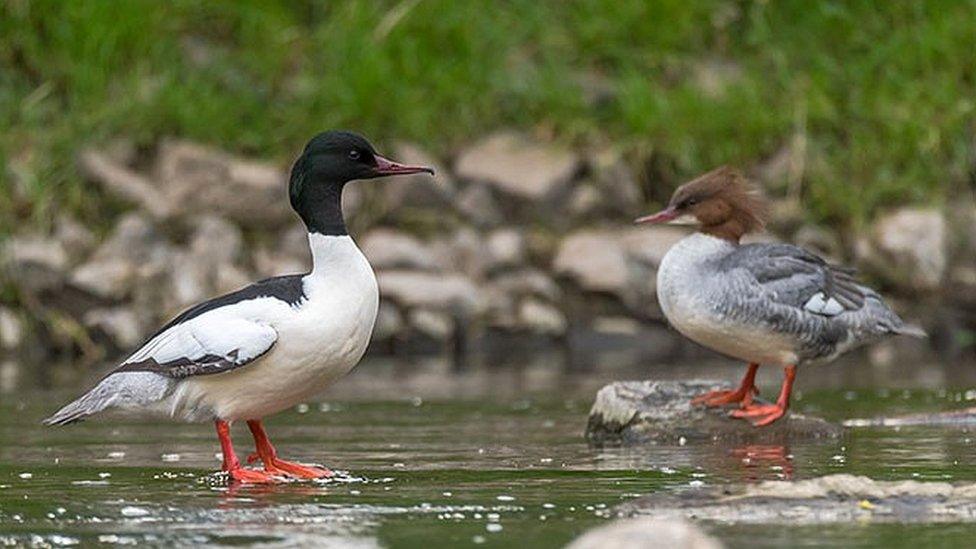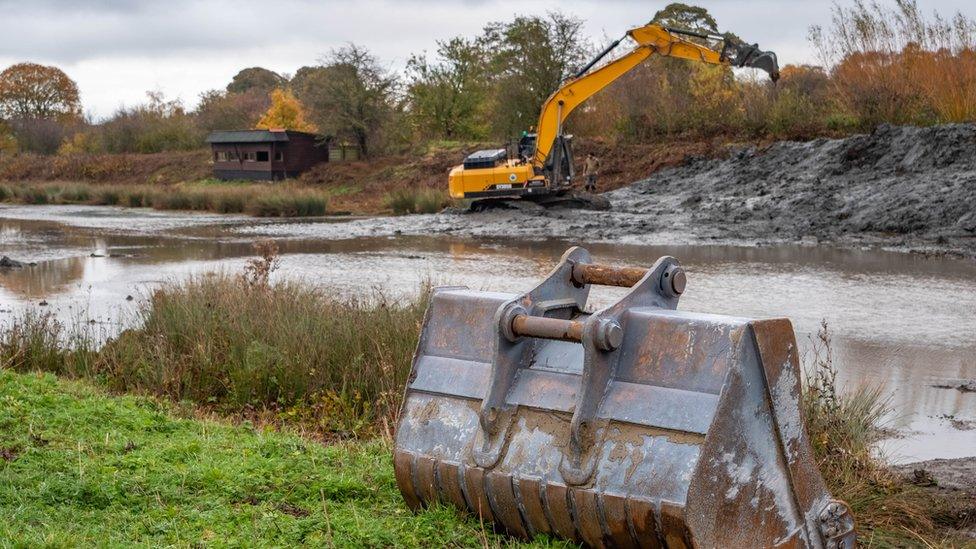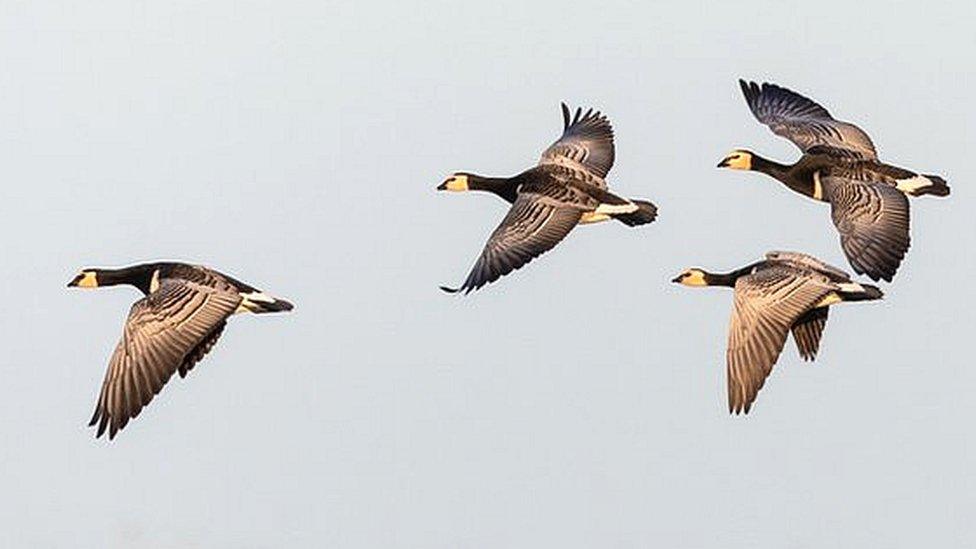Washington Wetland Centre project attracts record goosander numbers
- Published

The Wildlife Trusts describe the goosander as a "handsome bird and a great fisher"
A project to bring wildlife and people closer together at Washington Wetland Centre has seen a new site record for a species of "handsome ducks".
Desilting works are being carried out to bring more birds nearer to the hides - deepening areas for diving birds and created space for small waders.
So far nearly 1,000-tonnes of sediment has been removed from Wader Lake.
Reserve manager John Gowland, said 41 goosander were noted roosting near the hide overnight this week, a new record.

The project, which began last September, has led to an increase in kingfisher sightings at the site
"Wader Lake has been a focal point of our wild reserve since we opened in 1975, and is visited by thousands of birds each year.
"In that time, a huge amount of silt had built up and while it does have some benefits, we needed to remove it in order for visitors to experience nature in the way that we wanted.
"Water is now retained much more effectively here, even during dry spells, and this, as well as the introduction of natural perching posts, has resulted in some fantastic wildlife highlights.
"We've had increased kingfisher sightings and more common tern, redshank and teal regularly seen around the hide, something that was relatively uncommon before the project began," he added.

The long-term aim is to bring more bird species nearer to the hides overlooking the lake than ever before, the reserve said
Excavating Wader Lake to its original depth has meant it can hold water for longer during dry spells and fish populations will become established, which will support birds including grey heron, little egret and kingfisher.
The lower parts of the lake will also retain water better, allowing wading birds like lapwing and avocet to feed in the soft wet mud more during summer, the reserve said.
Mr Gowland added: "The initial works to the west of the lake have been a huge success and as we head into the winter, we are hopeful that visitors such as goosander and goldeneye and diving ducks such as tufted duck and possibly pochard will soon make use of the latest improvements too."

Follow BBC North East & Cumbria on Twitter, external, Facebook, external and Instagram, external. Send your story ideas to northeastandcumbria@bbc.co.uk, external.
Related topics
- Published12 May 2022

- Published20 December 2021
